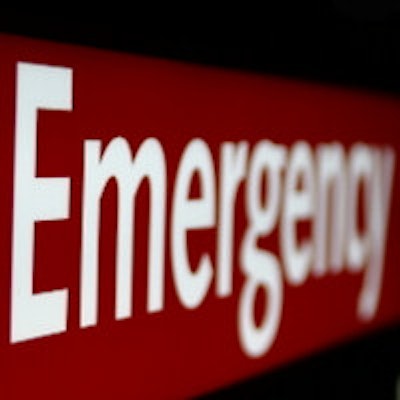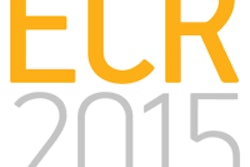
Researchers in France found that concerns over who would perform after-hours emergency ultrasound scans shouldn't be a roadblock for hospitals that want to implement an overnight teleradiology service. They found that all but 14% of scans could either be replaced or postponed.
A group of researchers from Hôpital d'Instruction-des-Armées Legouest in Metz described their experience implementing after-hours teleradiology and the impact it had on the provision of emergency ultrasound services. While they were able to either postpone or use another modality for most off-hours ultrasound requests, they found that there was no substitute for ultrasound in a few cases.
Still, the benefits of teleradiology are such that it's worth finding ways to offer the remaining emergency ultrasound scans that need to be performed, they wrote in an article published online April 3 in Diagnostic and Interventional Imaging.
Maximizing scarce resources
Many healthcare facilities in underserved regions have either adopted teleradiology or are thinking about doing so to maximize scarce resources. In France, there is an insufficient number of practicing radiologists, a situation that is particularly acute in the Lorraine region, where Metz is located.
What's more, 13% of the 263 radiologists practicing in Lorraine were older than 65 in 2012, so the staffing crunch will most likely worsen as they retire.
With these demographics in mind, a teleradiology project was launched in Lorraine in 2008 and has been under evaluation since 2010. In September, Hôpital d'Instruction-des-Armées Legouest plans to join with another hospital in the region, Metz-Thionville University Hospital Center, in participating in an on-call teleradiology service that will serve both institutions.
Teleradiology can help by enabling multiple institutions to share a single radiologist, such as for after-hours work. But while acquiring images remotely may work well for imaging modalities such as CT and MRI, it presents a problem for operator-dependent techniques like ultrasound. There are particular issues in France, where national law prohibits the performance of ultrasound exams without the presence of a physician trained in sonography who can take over a scan if necessary, wrote research team led by Dr. Camille Junca-Laplace Valageas.
Therefore, researchers decided to analyze the potential impact of outsourcing after-hours reads on ultrasound by analyzing the number of off-hours scans performed over the course of a year. In particular, they wanted to see if such scans could be replaced by other imaging modalities, or postponed until ultrasound specialists were available in the hospital during normal work hours.
They examined all requests for ultrasound exams received after hours from January to December 2012 at their 200-bed hospital, which does not operate a pediatric or women's health department. Requests were considered to be off-hours if they were received between 6 p.m. and 8 a.m. during the week, or they came in on weekends or during national holidays.
The researchers found that during the year, there were 176 requests for emergency ultrasound scans and 168 actual exams performed, compared with 1,014 CT studies performed and 28 MRI scans conducted. Of the ultrasound scans, there were 111 requests (63%) for abdominopelvic studies, 44 requests (25%) for venous duplex Doppler exams of the lower limbs, and 11 requests (6%) for testicular exams.
Of the requests, 44 orders (25%) could be postponed to normal working hours, while 33 requests (18.7%) could be replaced with another modality, and 23 (13%) could be both postponed and replaced. That left 76 requests for ultrasound (43.7%) that still needed to be fulfilled under the institution's existing imaging guidelines, the authors noted.
However, that number could be reduced further by expanding the clinical indications for which CT could be used instead of ultrasound after-hours, the researchers wrote. These indications could include pyelonephritis, cholecystitis, hepatitis, hepatic colic, cholangitis, and prostatitis. Under the expanded criteria, 39 requests (22.2%) for ultrasound could be postponed, 49 requests (27.8%) could be replaced, and 64 (36.4%) could be both postponed and replaced.
That left just 24 requests for ultrasound exams remaining to be addressed during the course of the year, representing 13.6% of all requests. These consisted of 10 requests for venous Doppler of the lower limbs, eight requests for testicular ultrasound, five requests for pelvic ultrasound, and one request for soft-tissue ultrasound to help find a foreign body.
Now what?
How should these remaining requests be handled? One possible solution could be to train emergency physicians on performing three-point compression ultrasound using the technique employed in North America, they noted, followed by a second complete study performed during normal work hours by a radiologist. The training and certification process is lengthy in France, but this could be a possible solution that fits with the goal of creating teams of emergency clinicians who have extensive qualifications, the researchers noted.
If such a trained clinician isn't available, the only other solution for urgent cases would be to transfer the patient to another institution. This would generate delay and extra cost in care, the researchers noted, but it would have to be weighed against the cost of maintaining a radiologist onsite.
In describing the drawbacks of their study, the researchers noted that because their study was performed only at a single institution, the results would only apply to facilities with similar characteristics, such as no pediatric or women's health departments. They also noted that converting ultrasound exams to CT studies would confer an additional radiation burden on patients.
"The core issue of radioprotection needs to be addressed, because if the implementation of teleradiology services results in an extension of the indications for replacing ultrasound, then the risk of overexposure will increase due to the availability of ultrasonography," they wrote.
That said, the researchers believe their findings indicate that concerns over how to handle off-hours ultrasound shouldn't be a barrier to adopting teleradiology.
"Although the capacity to address requests for ultrasonographic examination should be taken into account when setting up an on-call teleradiology service, it should not impede such plans," they concluded.



















